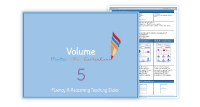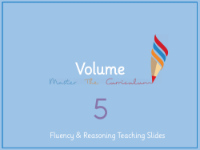Volume - Estimate capacity - Planning

Maths Resource Description
In a practical and engaging lesson intended for Year 5 students, the concept of estimating capacity is explored. The class begins with a discussion on the difference between volume and capacity, with an emphasis on capacity being the term used when referring to liquids. Using everyday items like bottles, jugs, and various containers, including a litre carton of milk and bottles of coke, students are introduced to the concept that different shaped containers can hold the same capacity. The key vocabulary for the lesson includes terms such as 'container', 'shape', 'capacity', 'volume', and units of measurement like 'litres' and 'millilitres'. Students work in pairs or small groups to fill containers with rice or water, learning to estimate and compare capacities in a hands-on manner.
The lesson progresses with activities that encourage students to read the capacity labels on containers and understand that the full container represents its total capacity. Through partner discussions and practical demonstrations, students realise that while containers may appear different in size and shape, they can have the same capacity. They are tasked with estimating the amount of liquid that different containers can hold and ordering them accordingly. To consolidate learning, students reflect on their understanding of how containers with the same capacity can have different volumes and the skills they used during the lesson. Differentiated worksheets and reasoning problems are provided to cater to varying levels of understanding, from those working towards the expected level to those achieving greater depth, where students estimate capacities and match objects with their corresponding capacities.



